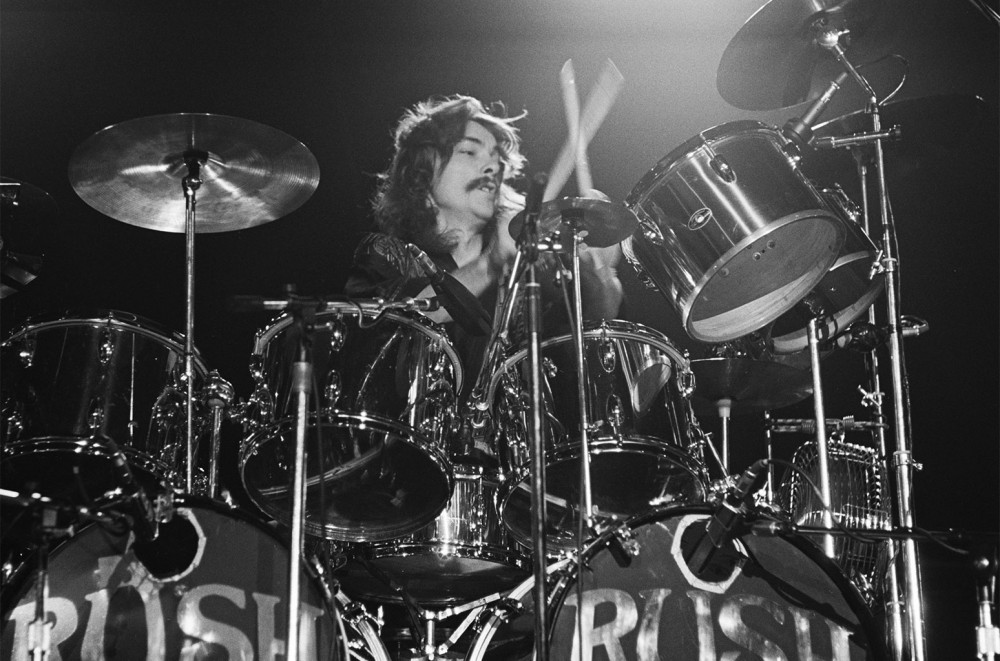To consider the best of Neil Peart's drumming, you're best advised to start with the Rush catalog — the whole thing — and then don't forget to check out his Burning For Buddy tribute albums to jazz great Buddy Rich. Peart amassed a tremendous amount of creative achievement during his 67 years as Rush's lyricist, as a writer of both fiction and non-fiction prose, and an instructor video.
In the wake of his death, however, he's being remembered primarily as a player, a drummer ranked in the very upper echelon of his peers and an influence of the highest order who expanded the parameters of what heavy rock drumming could be. In that regard picking his best moments is tough and perhaps even nonsensical — any list of 10 random songs he played on would hold up, and be fodder for arguments. But for our purposes in the immediate aftermath of his passing, here are ten Peart tracks that, if nothing else, provide a good starting point for essential further listening.
10. "Working Man"/"Finding My Way" (All the World's a Stage, 1977)
Peart certainly established his excellence on his first three studio albums with Rush. This combination of songs from the group's debut album, which sandwiched his solo, allowed Peart to put his formidable. stamp on the material he wasn't around to record.
9. "Earthshine" (Vapor Trails, 2002)
An arguably overlooked and under-appreciated part of Rush's canon (and subsequently remixed for a new release 11 years later), Vapor Trails was Rush's first album in six years and ended Peart's mourning hiatus after the death of his first wife and their daughter. He stepped out of the technically-precise direction of Rush's 90s releases and simplified it — but hardly dumbed it down. It's prime Peart in a way, doing more with less without sacrificing the grandeur and greatness of his previous high points.
8. "Cotton Tail" (Burning For Buddy…, 1994)
Peart was generous with his Burning For Buddy albums, bringing in friends to recreate and revise Rich's drum parts in their own style. He took the stool for this rendition of the 1940 Duke Ellington composition on the first Burning set, playing it as confidently as anything in the Rush cannon, finding limitless possibilities on a kit vastly more limited than what he used with Rush.
7. "The Rhythm Method" (Different Stages, 1998)
Coming out of the instrumental "Leave That Thing Alone," Peart's solo piece offered eight-plus minutes of percussive invention, incorporating the jazzy excursions of the Burning For Buddy projects into its heavy-hitting prog. Indulgent? Sure, but joyously so and a primer for anybody who wants to know why Peart is so highly regarded.
6. "Tom Sawyer" (Moving Pictures, 1981)
Peart gets things started with a fairly straightforward beat, but don't be fooled: Within the first half minute he's working his way around the kit, embellishing the pocket with octopus-like range and building to a frenetic climax that ranks in the air drumming hall of fame.
5. "The Spirit of Radio" (Permanent Waves, 1980)
Rush's highest-charting single to date was certainly an oddball for radio, especially when it shifts into its reggae passages. Somewhere out there in cyberland is a recording that isolates Peart's drumming. Find it and put a cushion on the floor about where you think your jaw might drop.
4. "YYZ" (Moving Pictures, 1981)
The hot, Grammy Award-nominated instrumental covers more in four-and-a-half minutes than some bands accomplish on an entire album, and Peart's mad scientist fills are a big part of that. Certainly the best all-time use of Morse code in a hard rock — or perhaps any — song.
3. "Cygnus X-1" ("Book I: The Voyage," A Farewell to Kings, 1977 and "Book II: Hemispheres," Hemispheres, 1978)
If you thought "2112" was an epic statement, Rush raised the bar with this two-part, nearly half-hour pairing that spanned two separate albums. Much was asked of Peart in both parts, and much was delivered, both lyrically and instrumentally. It's a lot to take in but a rewarding immersion for those who do.
2. "Xanadu" (A Farewell to Kings, 1977)
Another miniature symphony on which Peart plays a veritable percussion section himself with tubular bells, temple blocks, wind chimes, glockenspiel and more as well as the kit. It's a fascinating exercise of musical muscle — and let's not forget Peart's lyrics, with their references to the mythical Kubla Khan of Samuel Taylor Coleridge's poem.
1. "La Villa Strangiato" (Hemispheres, 1978)
The ultimate holy grail. A 12-part, nine-and-a-half minute opus that almost any drumming Peart fan cites as the song the separates the men from the proverbial boys. Geddy Lee once joked that Rush spent more time recording "La Villa Strangiato" than the entire Fly By Night album, and Peart's playing, with its time signature changes and complex patterns, drives the entire piece with masterful assurance and control.



